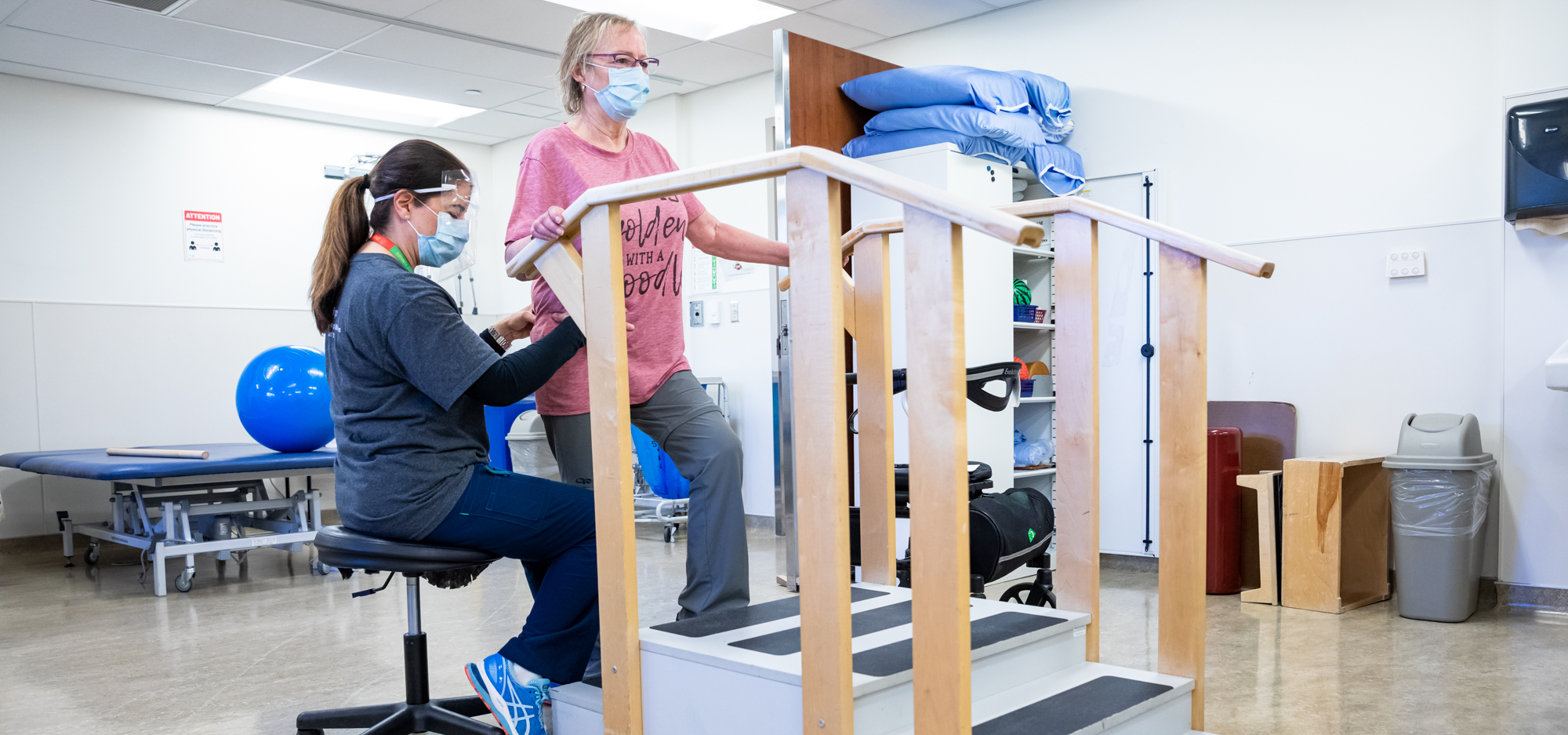
Heather Courneya arrives at Bridgepoint’s Ambulatory Care Centre ready to work hard. In November 2020, she experienced a stroke and her road to recovery hasn’t been smooth. After almost a month in acute care she spent close to three months in inpatient rehab at Bridgepoint Active Healthcare.
Heather was initially discharged home, only to be readmitted to acute care when doctors diagnosed two more strokes. She spent two more weeks in inpatient rehab at Bridgepoint and on March 9, was relieved to be discharged to continue her rehab journey as an outpatient. Despite the challenges she’s faced and the setback, Heather approaches her rehabilitation with good-natured determination. “I just keep doing and doing and doing,” she says. “I keep moving forward.”
Approximately 50,000 Canadians experience a stroke each year. Stroke is the leading cause of disability in adults and 300,000 people in Canada are living with the effects of a stroke.
Every stroke is different, depending on the part of the brain affected. Heather’s stroke affected the left side of her brain, causing paralysis in the right side of her body. When she first arrived at Bridgepoint, she was unable to get out of bed on her own. The stroke also affected her speech and memory.
Heather’s son Scott has supported his mom throughout her rehabilitation journey. Prior to the stroke, Heather, who is 63, was independent, self-sufficient and active. “She ran a business successfully, did volunteer work, and found time to walk her dog three times a day,” says Scott.
Bridgepoint’s program is tailored to each patient’s needs. treatment plans include all aspects of daily living and activities, in addition to sessions in the gym. “The rehab team listens to the unique functional goals of each individual,” says Dr. Audrey Yap, a physician specializing in Physical Medicine & Rehabilitation (PM&R) at Bridgepoint. “In rehab we support people as they transition from thinking ‘How am I going to survive?’ to now thinking “How am I going to thrive?”
Heather’s program included physiotherapy, occupational therapy, speech therapy and practicing with all activities of daily living. By the time Heather left inpatient care she was able to walk with a walker and her communication had improved. Heather also learned to use adaptive equipment and strategies to perform everyday tasks safely and effectively. “I had to work very hard,” she says, adding, “Everyone who looked after me did a wonderful job. They were very kind.”
Heather continues to stay positive as she works hard twice a week as an outpatient. Her goals are continuing to keep her motivated. She’s working towards walking her dog again and also wants to get back to scuba diving, one of her favourite hobbies. Heather keeps moving forward.
Bridgepoint is a leading provider of stroke rehabilitation, recognized with the Stroke Distinction designation from Accreditation Canada for excellence, innovation, high-quality services, and positive patient outcomes. Read more about the Bridgepoint Stroke Program here.
